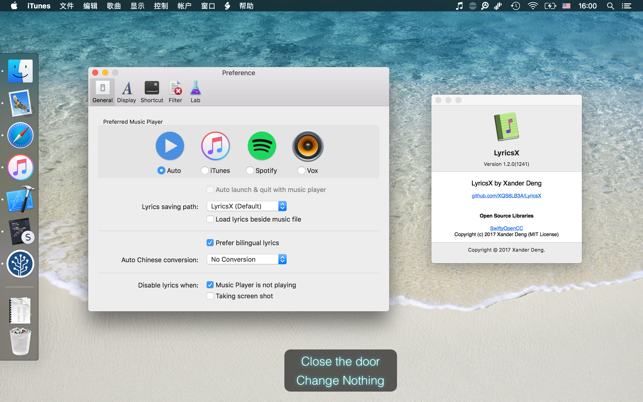
Convert Song Into Lyrics Software For Songs

We all know that lyrics are the words of songs. So if your lyrics didn't end up as songs, it means they have just been wasted!! The question now becomes: What steps should I take to convert my lyrics into a full-functional song? Well, there are two situations. First, you might be a musician too and then you have the choice of writing music for.
Importing songs Importing an existing chord chart The SongBook uses a format that intermingles chords and lyrics on a single line. If you have existing chord charts, there is an import utility to merge chords and lyrics together into the format the SongBook uses.
To import an existing chord chart into the SongBook: • From the main Songs page, click the Add new song link at the top of the page. • Click Import an existing chord chart. • Copy and paste the chords and lyrics for the song into the text field on the page. • Use spaces to line up the chords over the lyrics. You can place chords over any part of a word you want, not just at the beginning. • Click Import • Enter the rest of the information about the song, like the title, key, and tempo. • Review the imported chords and lyrics and click Add song to complete the import.
As an example, this import would turn this: Verse 1: G G7 C G Amazing grace, how sweet the sound into this: Verse 1: A[G]mazing [G7]grace, how [C]sweet the [G]sound The SongBook would then create a chord chart that looked like this: Importing songs from Sovereign Grace Music Pre-formatted chord charts from several albums are available to import into your SongBook, courtesy of. You can import all albums at once, or select an individual album to import. Songs that already exist in your SongBook will be skipped if you import again later, so you don’t have to worry about ending up with duplicate songs. • From the main Songs page, click the Import songs link at the top of the page. • Select what you want to import, either a specific album, or all albums. • Click Import songs from collection. Notes: • After importing, you are shown the list of songs that were imported.
Flatout Ultimate Carnage Key Serial Numbers. Convert Flatout Ultimate Carnage Key trail version to full software. Flatout ultimate carnage keygen serial number.
Songs that already existed in your SongBook are not imported a second time. If the list of imported songs is empty, that means all the songs in the collection you selected have already been imported. • A CCLI license is required to view and print the Sovereign Grace Music chord charts. You can enter your church’s CCLI license number by clicking on the CCLI settings link in the SongBook.
Importing songs in the OpenSong format An import function is available to convert songs in format to the format used by the SongBook. If you already have songs in the OpenSong format, follow these steps to import them into the SongBook: • From the main Songs page, click the Import songs link at the top of the page.
• Browse to the OpenSong file you want to import. • Click Import OpenSong file. • The contents of the file are converted into the format expected by the SongBook, and loaded into the Add Song form.
• Review the imported data and click Add song to complete the import.
Rk-reestr.ru has registered on 2004-01-19 and has updated on 2015-04-30 and will expire on 2016-01-19.This domain is 15 years old. Rk-reestr.ru opened on and this domain is 15 years, 1 month old. Reestri monopolistov rk. Write something about yourself. No need to be fancy, just an overview. No Archives Categories.
If anyone's wondering how this works, what happens when you invert a track is the same if you invert an image, it becomes the exact opposite. If you were to layer these two over each other and they were both identical (mono) you would hear nothing because they would cancel each other out. The same thing would happen with the original image and the inverted one if you layered them with 50% opacity. Now the reason this cancels the vocals and not most of the other audio is because vocals are always recorded in mono, while most other instruments are recorded in stereo, giving them minute differences that stand out when the tracks are flipped. So for an example of complete inversion cancellation you can split the stereo track in Audacity then change it from left or right to mono, duplicate it, and invert one of them.